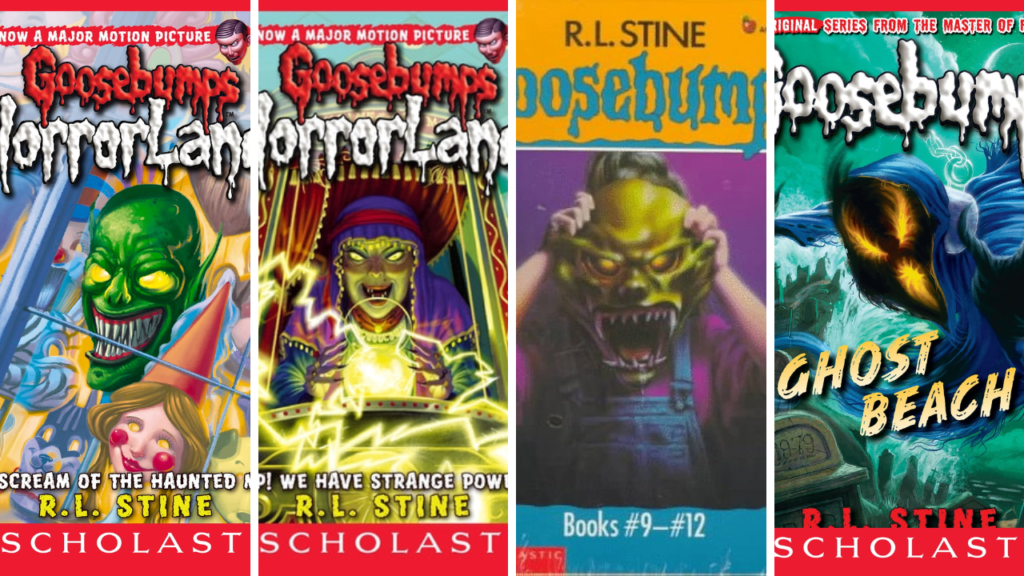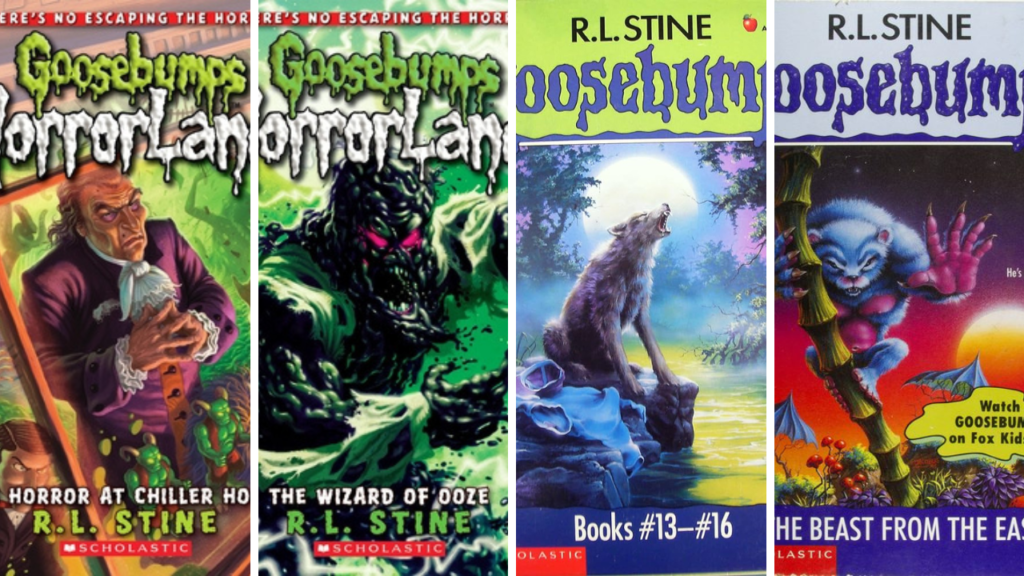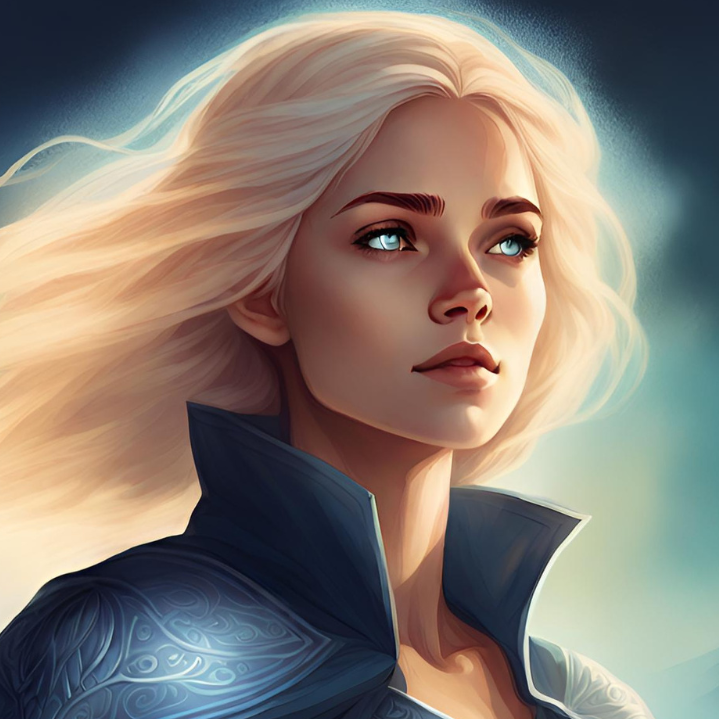R.L. Stine’s Goosebumps books captured the imaginations and sent shivers down the spines of young readers in the 1990s and beyond. With their spooky cover artwork, twist endings, and memorable monsters, the books became a cultural phenomenon. Later, the “Goosebumps HorrorLand” series emerged, promising even more chilling thrills. Let’s delve into the differences and how the Goosebumps franchise evolved.
| Key Takeaways | Summary |
|---|---|
| Classic Goosebumps | – Turned ordinary childhood experiences into terrifying adventures. – Concise, standalone stories with unexpected twists. – Retained tongue-in-cheek humor and embraced absurdity. – Shocking conclusions left readers eager for more. |
| Goosebumps HorrorLand | – Introduced HorrorLand, a continuous narrative set in a monstrous amusement park. – Elevated stakes and emotional investment with twisted threats. – Embraced psychological horror and blurred the lines between fiction and reality. – Resonated with maturing readers through relentless tension. |
| Personal Preference | – Fans appreciate simplicity, timeless fear factor, and twist endings of Classic Goosebumps. – HorrorLand enthusiasts enjoy ongoing saga, emotional connections to recurring characters, and darker, continuous narrative. – Choice depends on preference for quick scares or deeper, continuous story. |
| Legacy and Adaptability | – Tapped into common childhood anxieties in a safe yet genuinely frightening manner. – Championed the joy of reading and served as an entry point into the horror genre. – Adapted storytelling format to remain relevant across generations. |
Classic Goosebumps: Gateway to Fear
Goosebumps mastered the art of taking ordinary childhood experiences and injecting them with a monstrous twist. A ventriloquist dummy that comes to life, the summer camp from hell, a strange sponge that makes you grow uncontrollably – these were all relatable scenarios taken to terrifying extremes. Kids could easily imagine themselves in those situations, making the fright feel even more immediate. The compact, standalone nature of the stories allowed Stine to maximize the fear factor.
There was no filler, no meandering subplots – just a relentless build-up of suspense with a sting-in-the-tail ending. This made Classic Goosebumps the perfect pick-up-and-read fare, delivering a satisfying burst of horror just when you needed it. Despite the scares, Goosebumps always retained a tongue-in-cheek sensibility. This dark humor provided a release valve for the tension, making the stories terrifying yet somehow still fun.
Stine didn’t shy away from absurdity, which added to the charm and unexpectedness of the series. A trademark of the original series was the shocking conclusion. Just when you thought everything was resolved, Stine would deliver a final twist that upended expectations and left you with a delightfully creepy feeling. These twists became an addictive part of the Goosebumps experience, encouraging readers to keep picking up the next book in the hopes of being outsmarted once again.

Goosebumps HorrorLand: Enter at Your Own Risk
The concept of HorrorLand itself was a stroke of genius. By trapping characters in a monstrous amusement park, Stine created an endless source of threats and challenges. Every ride, every attraction, and even the park employees were potential sources of terror. This built a sense of claustrophobic dread and uncertainty unlike the standalone format of the classic series.
With a recurring cast, stakes suddenly existed beyond a single, self-contained story. Readers grew attached to characters like Lizzy, Luke, and Clay and feared for their lives in a way that wasn’t as prevalent in Classic Goosebumps. The ever-looming threat of HorrorLand meant that no one was truly safe, and every escape attempt held a glimmer of hope alongside the potential for crushing despair.
Goosebumps HorrorLand delighted in twisting the reader’s expectations. Stine’s penchant for breaking the fourth wall became even more pronounced. By directly addressing the reader and referencing other Goosebumps books, the series blurred the lines between fiction and reality. This made you feel not just scared for the characters, but also like you were part of their horrific ordeal.
HorrorLand leaned further into psychological horror compared to the more creature-focused scares of the original series. Villains became more twisted, traps more insidious, and the atmosphere more oppressive. There was a lingering sense of hopelessness, as if escape was truly impossible. This darker tone resonated with maturing readers, while still maintaining the core elements of thrills and chills.
Which Reigns Supreme?
Fans of the original formula adore the simplicity and timeless fear factor. Classic Goosebumps harkens back to a simpler time of childhood frights, delivering a perfectly packaged dose of terror. The standalone nature offers endless possibilities. Each book is a fresh nightmare, with no continuity to worry about. This makes it easy to find the perfect level of scary for any reader. The twist ending shines brightest in the classic format. With no background knowledge required, the sting in the tail is all the more impactful.
The Case for Goosebumps HorrorLand
HorrorLand provides a thrilling, macabre playground to get lost in. Fans relish the lore, the bizarre park inhabitants, and the ongoing fight for survival. With recurring protagonists, HorrorLand allows for deeper emotional investment. You cheer their victories, mourn their losses, and desperately want them to escape. The stakes are undeniably higher in HorrorLand. With no easy way out, the threat feels more constant and the tension builds to a fever pitch.
Ultimately, both Classic Goosebumps and HorrorLand hold a special place in the hearts of horror fans. It’s really about personal preference. Do you crave quick, satisfying scares with a dash of humor? Classic Goosebumps has you covered. Do you want a dark, ongoing saga with a relentless threat? HorrorLand will provide the thrills.

How Goosebumps Defined A Generation
Classic Goosebumps: Characters in the original series were often archetypal – the jock, the new kid, the bookworm. While this made them easy to relate to, it could limit depth. Their main focus was on getting through the scary scenario, rather than inward growth.
Example: In Night of the Living Dummy, the protagonists Lindy and Kris are more concerned about surviving Slappy the Dummy’s antics than reflecting on their own actions.
Goosebumps HorrorLand: The HorrorLand series tried to add a layer of complexity. There’s often character growth and recurring characters that evolve over the course of the series. The overarching story arc demanded that some kids face their fears or past mistakes to progress.
Example: In Escape from HorrorLand, the protagonists, Lizzy and Luke Morris, initially compete and clash. They must learn to work together to overcome the challenges and dangers of HorrorLand.
Writing Style
Classic Goosebumps: R.L. Stine’s classic writing style relied on short, punchy chapters ending in cliffhangers. It was a whirlwind of action and spooky set pieces, making the books quick and thrilling reads. However, this didn’t always allow much space for nuance or atmosphere.
Goosebumps HorrorLand: The HorrorLand series attempted to introduce more sustained tension and atmosphere. Though the action pace remained, certain books took more time building atmosphere. The concept of HorrorLand itself allowed for a darker, almost theme-park-gone-wrong type of setting.
- Example: Dr. Maniac vs. Robby Schwartz has sequences focusing on the psychological fear and confusion Robby experiences, rather than just a series of monster encounters.
Cultural Impact
Classic Goosebumps: Goosebumps holds an iconic place in 90s pop culture. It played a major role in getting many kids hooked on reading, especially reluctant readers. The simple, thrilling scares provided a gateway into the world of horror. The TV series further cemented its place in childhood memories.
Goosebumps HorrorLand: While successful, HorrorLand didn’t make the same pop culture splash. Its contribution lies in demonstrating how a series can adapt and expand its themes. The books themselves were slightly longer, some themes were a bit darker, and the serialized nature added unique appeal even if it didn’t make it as iconic as the original.
Important Note: Even within each series, there’s variation. Some classic Goosebumps books feature surprisingly nuanced characters, while some HorrorLand entries prioritize simple scares. This analysis looks at a broad trend across the two series, not a rule for every single book.

The Legacy of Goosebumps
Goosebumps didn’t shy away from tapping into the common anxieties of young readers. Fear of the unknown, being lost or abandoned, creepy creatures lurking in the dark, the feeling of being different – all these worries found fantastical expression within the pages of Goosebumps books. By exaggerating these fears into monster attacks or supernatural situations, kids were given a framework to process and overcome their anxieties in a symbolic way.
While genuinely frightening, Goosebumps always maintained a certain level of ‘safe’ terror. Readers knew that however twisted things got, there was an escape at the end of the book. This allowed them to indulge in fear while feeling ultimately secure – a key factor in making these stories enjoyable rather than traumatizing.
For many children, Goosebumps was the first taste of the horror genre. Its blend of scares and humor made horror accessible, sparking a lifelong love of the macabre. Even if readers eventually graduated to darker fare, Goosebumps likely played a pivotal role in nurturing their appreciation for all things scary.
Beyond the chills, Goosebumps championed the joy of reading. The books were fun, fast-paced, and easy to pick up, making them ideal for reluctant readers. For many kids, it was the first series they became obsessed with, proving that reading could be an exciting and rewarding experience.
R.L. Stine’s genius lies in his ability to understand his young audience. The evolution from Classic Goosebumps to HorrorLand demonstrates a recognition of how readers were maturing. He adapted not just the type of scares, but the storytelling format to keep up with changing preferences. It’s this adaptability that ensures Goosebumps remains relevant to new generations.

FAQ
| FAQ: Classic Goosebumps vs. Goosebumps HorrorLand |
|---|
| 1. What are Classic Goosebumps and Goosebumps HorrorLand? |
| Classic Goosebumps refers to the original series of Goosebumps books with standalone stories and twist endings. Goosebumps HorrorLand is a spin-off series featuring a continuous narrative set in a monstrous amusement park. |
| 2. What sets Classic Goosebumps apart from Goosebumps HorrorLand? |
| Classic Goosebumps offers standalone stories with quick scares and twist endings, while Goosebumps HorrorLand provides a continuous narrative with deeper psychological horror and ongoing character development. |
| 3. Which series is better for quick scares? |
| Classic Goosebumps is ideal for quick scares with its standalone stories and twist endings. |
| 4. Which series offers a deeper, ongoing storyline? |
| Goosebumps HorrorLand offers a deeper, ongoing storyline with recurring characters and a continuous narrative set in the monstrous amusement park. |
| 5. Can I enjoy Goosebumps HorrorLand without reading Classic Goosebumps first? |
| Yes, you can enjoy Goosebumps HorrorLand without prior knowledge of Classic Goosebumps. |
| 6. Are the scares in Goosebumps HorrorLand too intense for younger readers? |
| Goosebumps HorrorLand maintains suitable scares for middle-grade readers, balancing frights with humor and a sense of safety. |
| 7. Which series is more suitable for readers who enjoy dark, continuous narratives? |
| Goosebumps HorrorLand is more suitable for readers who prefer dark, continuous narratives with ongoing character development and higher stakes. |
| 8. Will I miss out on the essence of Goosebumps if I only read one series? |
| Both Classic Goosebumps and Goosebumps HorrorLand capture the essence of the Goosebumps franchise, offering unique but equally thrilling experiences. |


[…] of relying on traditional spooky colors like murky browns and shadowy grays, Goosebumps covers often feature clashing, almost garish color combinations. This makes them jump off the shelf. […]
[…] this series the comeback kid of Goosebumps. It introduced HorrorLand, a nightmarish theme park where the thrills are real, and the danger is lethal. The meta-narrative of kids trapped in […]
[…] hardcore Goosebumps readers might find the movies miss some of the nuance, the added humor and spectacle broaden the appeal. […]